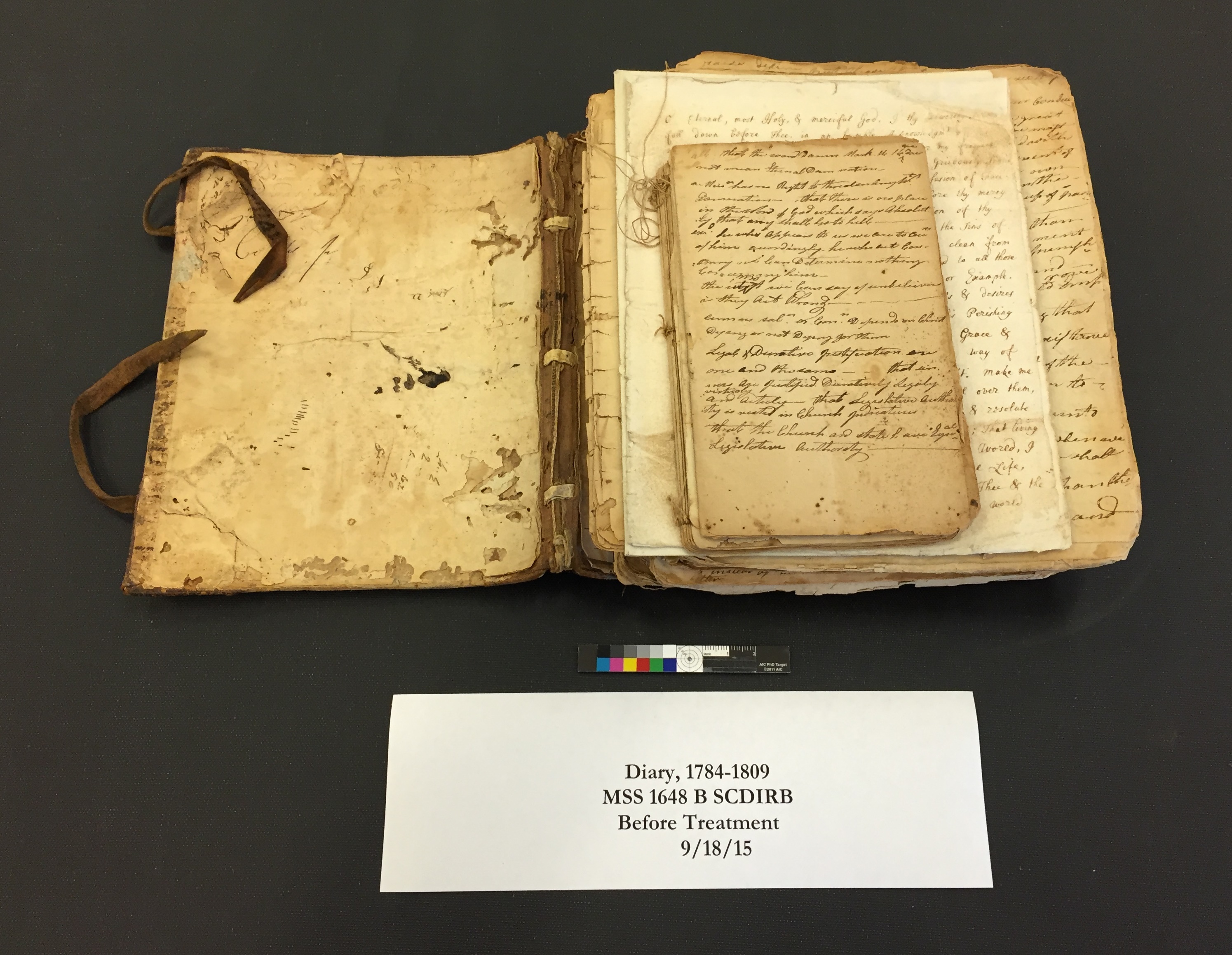Older hardcover books within the Smithsonian Libraries’ circulating collections often contain unique information which serve staff and patrons over the course of many years. With age and use, these items sometimes begin to break along the hinges. The book cloth becomes frayed, torn, or cracked and the spine piece may separate completely from the boards. This damage necessitates a repair which will conserve and recreate the original binding structure as much as possible.
Category: The Fix (Preservation)
A scrapbook from the Dibner Library of the History of Science and Technology came to the book conservation lab though our Adopt-a-Book program. Through the program, patrons can adopt a more »
A small book that is housed in the Joseph F. Cullman 3rd Library of Natural History, was recently included in the exhibition Nation to Nation: Treaties Between the United States more »
As stated in the Fix’s previous post, “Fixing a Fold-Out Plate” fold-outs are commonly used to feature important illustrations and diagrams in books. Unfortunately, they are also common sights in more »
Fold-out plates are often used to feature important illustrations or diagrams in many books related to science, technology, and history. Though a fold-out is designed to be frequently folded and unfolded, the stress on the creased fold lines from constant handling often causes the paper to break.
The conservation of manuscript pages can be very tricky. In the case of the McAuley Diary, from our Dibner Library of the History of Science and Technology, there were many issues. The manuscript consisted of multiple sized unbound sections housed together in a leather cover that was far too small for its contents. The pages were nearly all crumpled and torn and many pages had areas of loss. In this condition the text was not legible and attempts to turn pages could result in further damage from tearing. We proceed cautiously with hand written documents as many inks become unstable over time and are very sensitive to water.
Book supports or, more aptly named, cradles are used to display bound library materials in exhibitions. The Smithsonian Libraries plans and installs two exhibitions each year that include as many as a hundred volumes on display at a given time. Since books come in various sizes shapes and materials, a proper support is necessary to assure that the book rests comfortably while on exhibit yet have the cradle remain somewhat invisible.


